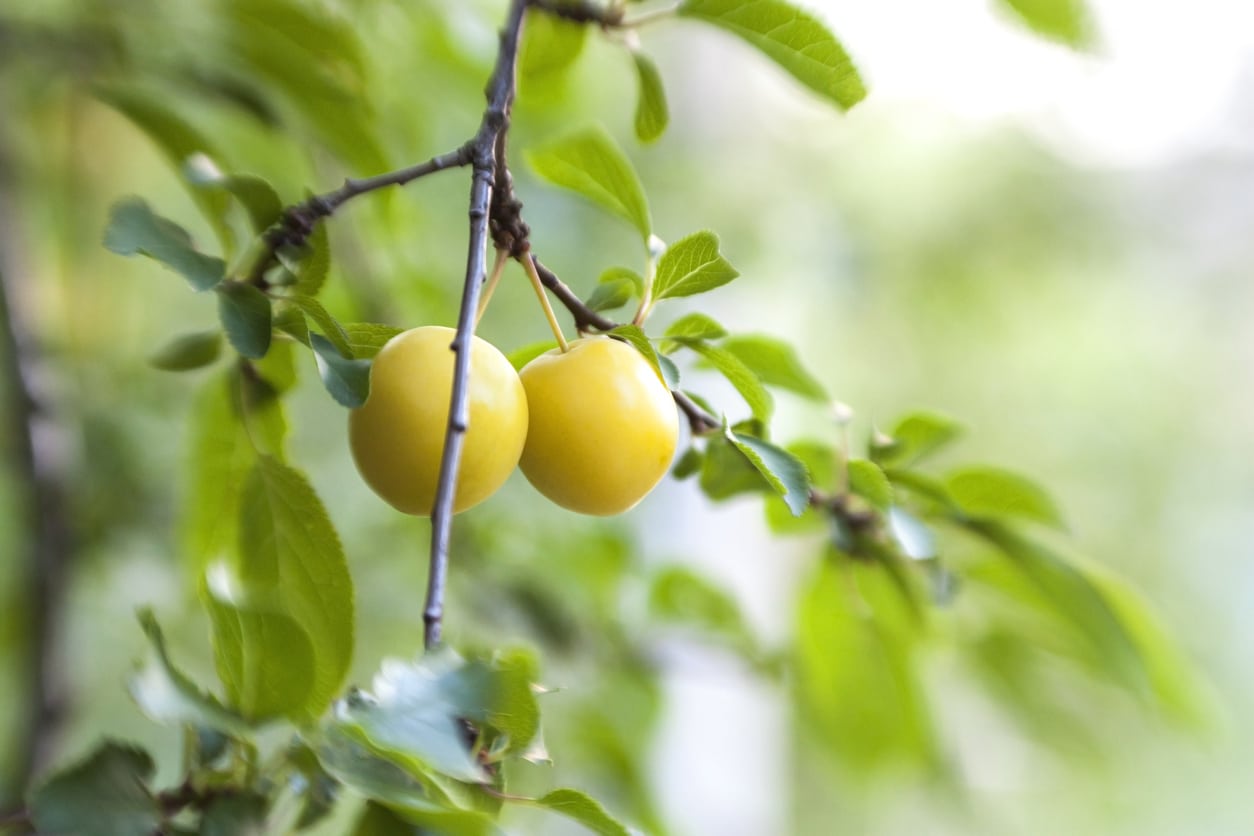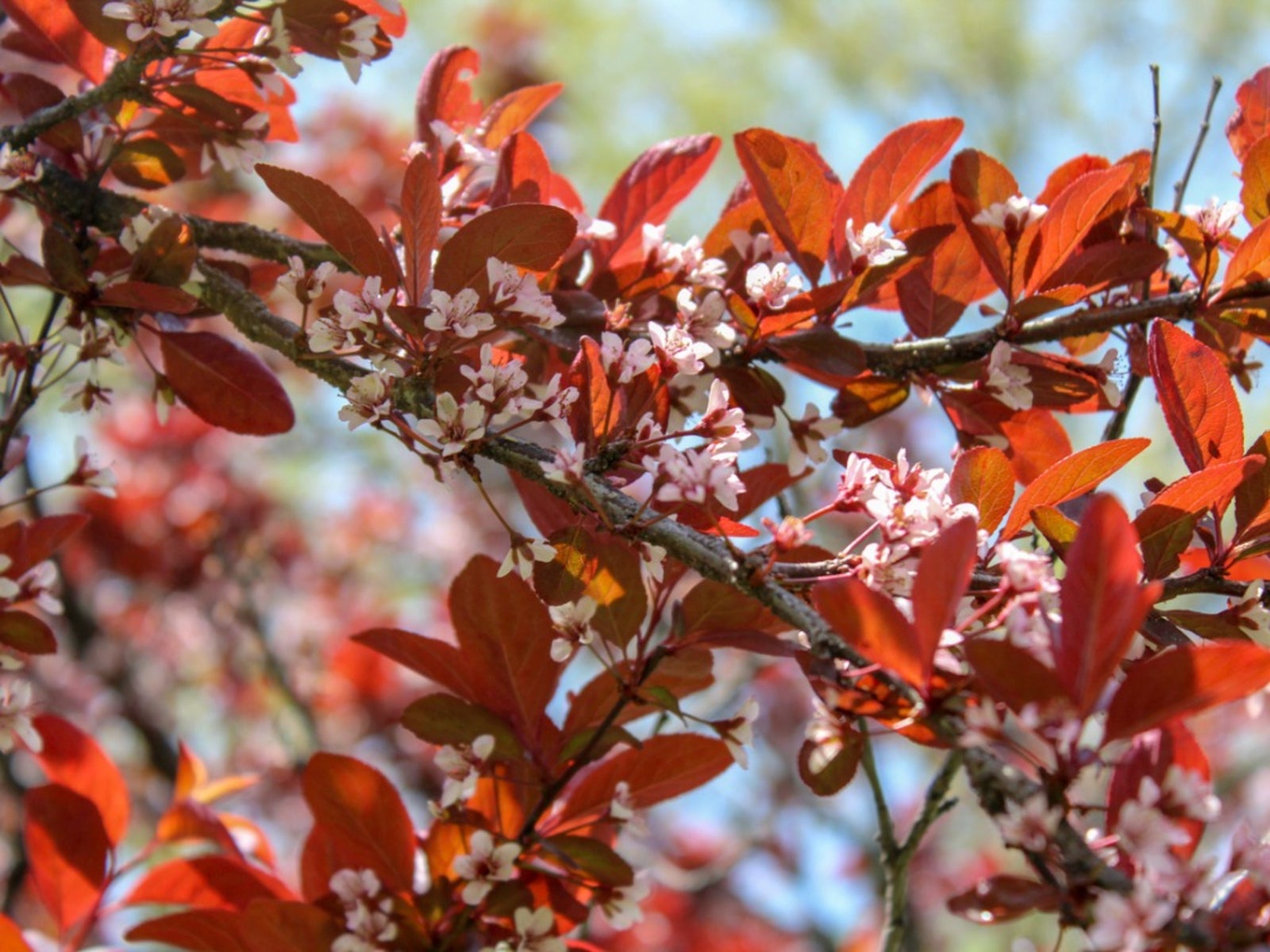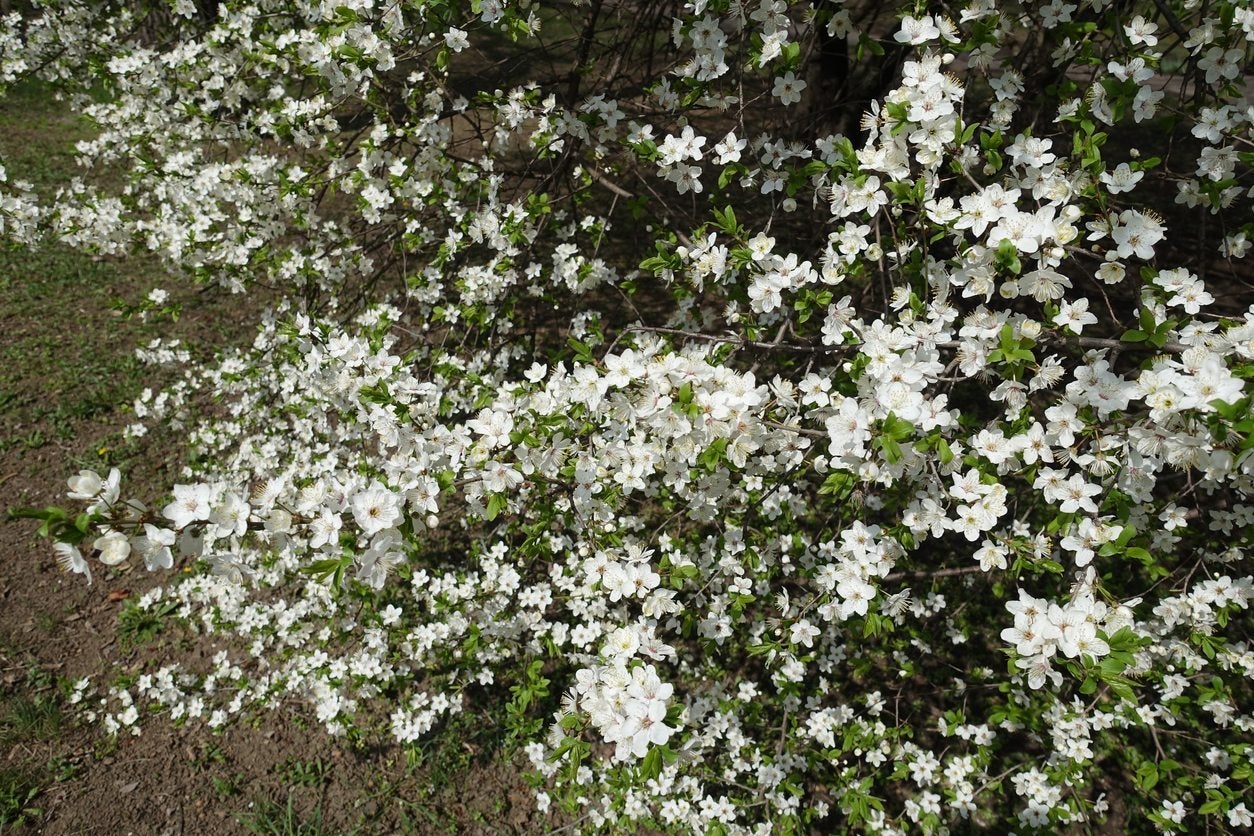Cherry Plum ‘Ruby’ Info: Learn About Ruby Cherry Plum Care

Cherry plums are the love child of sandcherries and Japanese plums. They are smaller than European or Asian plums and are classified as a cooking plum. The cherry plum ‘Ruby’ is a cultivar from the Ukraine. Ruby cherry plum fruit is sweeter than most cherry plums, but still has slightly tangy flavor. Try growing Ruby cherry plums for use in canning, baking, and other culinary pursuits.
About Ruby Cherry Plum Tree
Is it a plum or is it a cherry? If you can't tell, it is likely a cherry plum. Ruby cherry plum trees are an example of early season fruits that are partially self-fruitful. Better yields will come with a pollinating partner, but you can grow the tree without another plum variety nearby and still get small crops. The cherry plum ‘Ruby’ is an outstanding variety that needs little maintenance or special care if situated correctly. The name cherry plum sounds like a fictional fruit from a Dr. Seuss story but it is real. For those of you not familiar with the fruit, they first became available in the late 1800's and early 1900's. Most are low shrubs that are prolific producers. Ruby cherry plum fruit is larger than most cherry plums and reportedly has some peach flavored notes. The skin is peachy red but the interior is a deep, dark, vibrant red. The tree is upright and has pretty white blooms in spring. It can grow 12 to 15 feet (3.5-4.5 m.) tall. Cherry plums are great in pies, juices, jams, jellies, and simply canned.
Growing Ruby Cherry Plums
These trees are ready for sale at the end of winter. Plant them when the soil is workable. Ruby cherry plums prefer sandy soil and cannot tolerate boggy sites. Incorporate plenty of gritty material and compost to amend heavy soil. Dig the planting hole twice as deep and wide as the root mass. Soak bare root trees overnight prior to planting. Make sure to backfill around the roots and water the soil in. New trees may need a stake to train them to a vertical habit. These types of plums do not need a lot of pruning. During the first two years, prune to give the tree some circulation in the center and select the sturdiest stems to become the bearing scaffold.
Ruby Cherry Plum Care
In the correct site, these Ruby cherry plums can grow like weeds. Once they are trained straight and have a good initial form, trimming is rarely needed except to remove old, dead, or diseased wood. Fertilize in early spring just as buds are breaking. Watch for pests and disease, especially fungal disorders which can be combated with a fungicide spray. Keep young trees moist but, once established, mature plants need supplemental moisture only in times of extreme heat or drought. Ruby cherry plums are easy to grow and have few maintenance issues. Their fruit is delightful in a variety of uses and the tree itself provides an ornamental show with spring blooms and ruby red fruit in August.
Gardening tips, videos, info and more delivered right to your inbox!
Sign up for the Gardening Know How newsletter today and receive a free copy of our e-book "How to Grow Delicious Tomatoes".

Bonnie Grant is a professional landscaper with a Certification in Urban Gardening. She has been gardening and writing for 15 years. A former professional chef, she has a passion for edible landscaping.
-
 Create A Romantic Garden Straight Out Of Bridgerton: Regency Era Romance In Your Garden
Create A Romantic Garden Straight Out Of Bridgerton: Regency Era Romance In Your GardenTry some romantic garden ideas straight out of Bridgerton. Flowers and gardens in the Regency era were lush and charming and you can get the same look!
By Bonnie L. Grant
-
 Moody Blooms For Spring: 8 Types Of Black Flowers To Add Drama To Spring Displays
Moody Blooms For Spring: 8 Types Of Black Flowers To Add Drama To Spring DisplaysFrom midnight burgundies to inky violets, several types of black flowers can enrich and embolden a spring display. Try these brooding bloomers for a moody garden
By Tonya Barnett
-
Gypsy Cherry Plum Info – Caring For Gypsy Cherry Plum Trees
Gypsy cherry plum trees produce large, dark red fruit that looks much like a large Bing cherry. Originating in the Ukraine, cherry plum ‘Gypsy’ is a cultivar favored throughout Europe and is hardy to H6. The following Gypsy cherry plum info will help with growing this tree.
By Amy Grant
-
 Golden Sphere Cherry Plum Trees – How To Grow Golden Sphere Cherry Plums
Golden Sphere Cherry Plum Trees – How To Grow Golden Sphere Cherry PlumsIf you love plums and want to add a little variety to the landscape, try growing a Golden Sphere plum. Golden Sphere cherry plum trees bear large golden fruit about the size of an apricot that can be eaten fresh out of hand, juiced or preserved. Learn more here.
By Amy Grant
-
 Newport Plum Info: Learn How To Grow A Newport Plum Tree
Newport Plum Info: Learn How To Grow A Newport Plum TreeNot everyone has room for a large tree. As a landscape designer and garden center worker, I often suggest smaller ornamentals for these situations. Newport plum is one. Click this article for Newport plum info and helpful tips on how to grow a Newport plum.
By Darcy Larum
-
 Myrobalan Plum Pruning Info: How To Prune Myrobalan Cherry Plums
Myrobalan Plum Pruning Info: How To Prune Myrobalan Cherry PlumsShould I cut back Myrobalan plum? While frequent or excessively trimming a cherry plum is not recommended, it may be necessary at times. Click on the article the follows to learn when and how to prune Myrobalan cherry plums.
By Darcy Larum
-
 Cherry Plum Information – What Is A Cherry Plum Tree
Cherry Plum Information – What Is A Cherry Plum Tree?Cherry plum? a group of Asian plum trees that are commonly called cherry plum trees. It could also refer to the hybrid fruits which are literally a cross between plums and cherries. This article will explain the differences of trees commonly called cherry plums.
By Darcy Larum